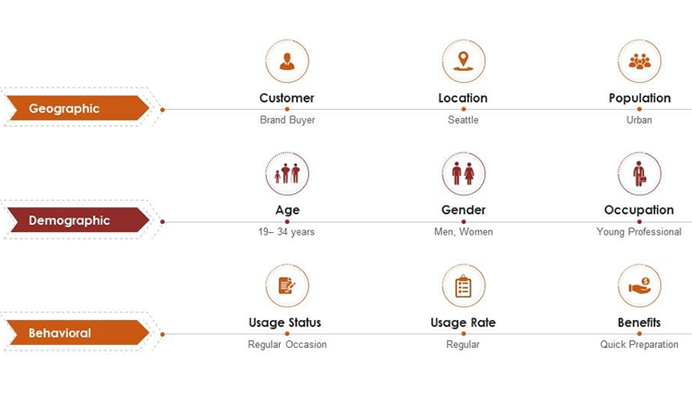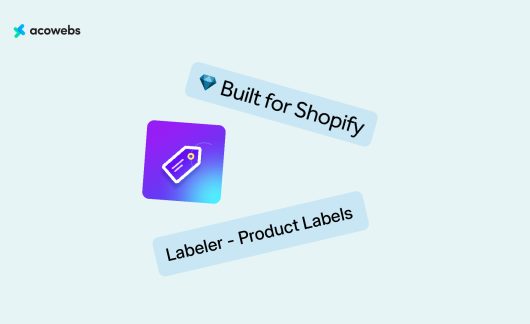In the dynamic landscape of eCommerce, where competition is fierce and consumer behavior constantly evolves, choosing the right marketing strategy is paramount for sustained success. Marketing drives a brand’s visibility, engagement, and revenue.
Two prominent approaches that businesses often contemplate are product marketing and growth marketing. Both strategies aim to elevate a brand’s online presence and sales figures, yet they do so through distinct methodologies.
The decision between these two strategies holds immense significance, shaping how a business will attract, engage, and convert its target audience. Crafting an effective marketing strategy involves a deep understanding of the nuances and implications of each approach.
It’s about adopting the latest trends and aligning the strategy with the brand’s identity, goals, and target market.
In this exploration, we will delve into the two marketing strategies’ unique characteristics, benefits, and considerations, assisting eCommerce businesses in making an informed choice that propels them toward sustainable growth and success.
What Is Product Marketing?
Product marketing is a dynamic process that involves the entire journey of introducing a company’s products to the market and ensuring its ongoing success. It’s not limited to a specific phase but spans various stages and activities.
This marketing strategy is about finding the sweet spot where products and the market intersect. The process starts with understanding market needs through in-depth research and analysis. The insight guides the development of products that address those needs effectively.
Product marketing doesn’t merely stop at launching new products. It can extend its influence beyond the initial release.
For some companies, product marketers play a crucial role by shaping product development strategies and refining sales approaches even years after a product’s introduction.
Apple is a prime example of a brand that has effectively utilized this marketing model. Through their sleek and innovative product launches, like the iPhone and MacBook series, Apple has masterfully connected their products with consumer desires.

What are the key points that entail product marketing?
1. Market Research and Analysis
This involves conducting thorough research to understand the target market, customer needs, preferences, and trends.
It includes gathering data on customer demographics, behavior, and pain points. The aim is to identify opportunities and gaps in the market that the product can address effectively.
2. Competitive Analysis
Competitive analysis involves assessing rivals’ strengths, weaknesses, pricing, and marketing approaches. This helps product marketers identify distinctive features of their offering, enabling effective differentiation and highlighting unique selling points in their campaigns for a competitive advantage.
3. Target Audience Segmentation
Target audience segmentation involves categorizing the market into specific groups using criteria like age, preferences, behaviors, and needs. This segmentation allows marketers to customize their messages and strategies to better connect with diverse customer segments.
By understanding each group’s distinct characteristics, marketers can create more relevant and resonant campaigns, increasing the likelihood of engaging customers personally and driving better results.
Below is an example of approaching target market segmentation to achieve your short and long-term goals.

4. Positioning and Messaging
Positioning and messaging involve creating a concise and captivating value proposition that communicates a product’s distinct advantages to the intended audience.
This encompasses determining where the product stands in the market, highlighting its competitive edge, and showcasing how it effectively addresses specific customer needs or challenges.
Crafting this narrative helps customers understand the product’s value, making it more appealing and differentiated in a crowded market landscape.
5. Go-to-Market (GTM) Strategy
A Go-to-Market strategy (GTM) entails developing a thorough plan for releasing a product onto the market. This strategy includes important choices, including deciding on the best price, selecting the best distribution channels, developing sales strategies, and describing promotional initiatives.
A GTM plan ensures a successful product launch by deliberately addressing these factors, maximizing the product’s exposure, accessibility, and attractiveness to the target market.
6. Content Creation
Content creation is a pivotal step in product marketing involving generating diverse content forms, such as product descriptions, sales materials, blogs, videos, and social media posts. This content serves to reinforce marketing endeavors and engage the audience effectively.
It must be in harmony with the overall messaging strategy, accurately conveying the product’s value proposition and resonating with the specific preferences and needs of the target audience. Well-crafted content enhances brand perception and drives customer interest and interaction.
7. Collaboration with Cross-functional Teams
Product marketers collaborate with teams like product development, sales, design, and customer support to ensure a cohesive approach.
Encouraging effective communication and teamwork guarantees that all departments comprehend and sustain the product’s desired positioning and messaging.
This alignment creates a coherent brand image and a more engaging customer experience that reverberates throughout the product’s lifecycle.
8. Product Launch
This implements a planned marketing strategy to build interest and recognition within the target market. It involves organizing numerous initiatives, including events, webinars, press releases, and influencer partnerships.
The goal is to generate interest in the product, spread the word about it, and ensure it enters the market successfully. Companies use these strategies to attract new clients and promote early adoption.
On January 14, 2021, Samsung launched (S21, S21+, and S21 Ultra). Given the COVID-19 pandemic, Samsung opted for a virtual launch event streamed globally. This allowed them to reach a wide audience while adhering to safety guidelines.
Samsung highlighted the innovative design and advanced features of the Galaxy S21 series, including improved cameras, 5G connectivity, and enhanced processing power.

9. Sales Enablement
Sales enablement involves equipping the sales team with essential resources to optimize product selling. This encompasses crafting persuasive sales presentations, providing guides to address objections, offering thorough product training, and preparing FAQs.
With these tools at their disposal, the sales force can confidently engage clients, get over obstacles, and clearly convey the product’s benefits, which will increase conversions and customer satisfaction.
10. Ongoing Promotion and Maintenance
Product marketing remains active beyond the launch phase, involving continuous efforts to sustain relevance and customer engagement.
This entails running targeted promotional campaigns to maintain interest, addressing evolving market dynamics through strategic adjustments, and incorporating customer feedback for enhancements.
By actively adapting to changing circumstances, brands ensure that their products remain competitive and aligned with customer needs, fostering sustained success.
What Is Growth Marketing?
Growth marketing is a strategic marketing approach that focuses on using data-driven insights, experimentation, and optimization techniques to drive sustainable business growth.
It goes beyond product promotion, focusing on customer loyalty and achieving goals like expanding user base and revenue.
Growth marketers quickly adjust to changing digital environments by examining data and user feedback. They prioritize A/B testing, SEO, email marketing, etc., making data pivotal for decision-making.
This approach embraces short innovation cycles and customer-centricity, understanding demographics, pain points, and interactions. Through iterative learning, growth marketers refine strategies, allocating resources based on data-backed insights.
Key aspects of growth marketing are:
1. Experimentation
It is characterized by its emphasis on experimentation, employing various techniques and tools to test various concepts and hypotheses swiftly.
One widely used method is A/B testing, which involves presenting multiple versions of a marketing element, such as headlines, images, or calls-to-action, to different audiences.
By analyzing the performance of these variations, marketers can identify what resonates best with their target audience and optimize their campaigns accordingly.
The sample below demonstrates how replacing a picture with a video significantly increased Facebook impressions. When selecting your videos, use A/B tests to discover the best duration, type, and tone.

2. Data-Driven Approach
The growth strategy is based on data analysis, the cornerstone of its data-driven approach.
Marketers analyze data to determine the effectiveness of their strategies, track user behavior, and allocate resources sensibly. This approach guarantees that data supports decisions and improves campaigns and outcomes.
3. Scalability
This approach aims to identify methods that can be quickly scaled up to support significant corporate growth.
These strategies enable quick duplication and amplification by utilizing digital platforms and technologies. This adaptability enables brands to build on proven strategies, quickly adjust to shifting market circumstances, and experience rapid growth.
4. User-Centric Focus
Prioritizing the audience’s requirements, actions, and challenges is paramount. In this approach, marketers collaborate with product units to harmonize marketing endeavors with the product’s benefits and user journey, fostering meaningful connections and resonating experiences.
5. Cross-Functional Collaboration
The synergy among different divisions, including marketing, product creation, tech development, and data analysis, is pivotal. This teamwork ensures seamless user interactions and potent campaigns by capitalizing on each expertise area, enriching user involvement and campaign effectiveness.
6. Virality and Referral Programs
Businesses exploit the power of word-of-mouth by encouraging customers to refer a good or service to others. Creating viral loops and rewarding referrals promote rapid growth.
A self-perpetuating organic growth cycle is established as satisfied users refer new customers. This strategy leverages trust and influence within social circles, leading to rapid adoption and increased market presence.
7. Optimization
Marketers consistently scrutinize performance metrics, fine-tuning strategies for better outcomes. This could include refining ad text, enhancing landing pages, or adapting target parameters. Campaigns are tuned to resonate more successfully with audiences through iterative refining, increasing engagement and conversions.
8. Lean and Agile Methods
Growth marketers adopt lean and agile approaches, highlighting flexibility and responsiveness. These methodologies enable rapid adjustments in response to insights and evolving market dynamics.
The emphasis on iterative learning and swift adaptation empowers marketers to refine strategies efficiently, capitalize on emerging opportunities, and maintain alignment with changing consumer behaviors and preferences.
9. Channels and Tactics
Growth promotion encompasses a diverse array of strategies and platforms. These encompass search engine optimization (SEO), content marketing, social media ads, influencer collaborations, email campaigns, and conversion rate optimization (CRO).
By employing this multifaceted toolkit, marketers amplify reach and impact through online avenues, tailoring approaches to audience preferences for maximal effectiveness.
10. Customer Lifecycle Focus
Growth marketers meticulously chart the customer journey, identifying touchpoints to engage and retain users across stages. They optimize onboarding processes, curate personalized communications, and implement tactics to counteract churn.
By holistically addressing each phase, from awareness to advocacy, marketers cultivate enduring customer relationships, heightening loyalty and the lifetime value of users.
Differences between Product and Growth Marketing
While both aim to drive a product’s success, they adopt distinct perspectives and employ diverse tactics to achieve their objectives.
1. Focus and Goals
The product approach focuses on effectively introducing and promoting products to the target market. Growth strategy concentrates on overall business growth, including expanding user base, increasing revenue, and enhancing customer retention.
2. Approach
Product strategy emphasizes understanding the market customer needs, crafting compelling messaging and positioning for the products while the other revolves around data-driven decision-making, iterative testing, and optimization of various marketing strategies.
3. Timeframe
Product marketing timeline often aligns with product launch cycles and focuses on creating buzz and interest during product releases, while the growth approach operates across the entire customer lifecycle, from acquisition to retention and advocacy, with an ongoing approach to driving business growth.
4. Audience Engagement
Product promotion targets potential customers based on their needs and preferences, tailoring messages to highlight the product’s unique value proposition.
The growth approach prioritizes engagement across multiple touchpoints, seeking to provide value at various customer journey stages to enhance loyalty and retention.
5. Collaboration
Product approach collaborates closely with cross-functional teams like product development, design, and sales to ensure consistent messaging and alignment.
In contrast, the other approach collaborates among various departments, including marketing, product, data analysis, and tech development, to execute strategies that foster growth.
6. Metrics
Product strategy focuses on metrics related to product launch success, such as initial sales, market share, and customer feedback.
Growth Marketing measures a wider range of metrics, including customer acquisition cost (CAC), customer lifetime value (CLTV), churn rate, and conversion rates, to assess overall business growth.
The similarities include:
- Both strategies prioritize understanding and catering to customer needs, preferences, and pain points to create effective marketing campaigns.
- The strategies rely on data analysis to make informed decisions. While product marketing uses data to understand the target audience, growth marketing uses data for experimentation and optimization.
- They require collaboration across different departments to ensure consistent messaging and alignment with overall business goals.
- Both strategies consider the customer journey and aim to provide value at various touchpoints to enhance customer engagement and loyalty.
- The strategies emphasize adaptation and adjustment based on changing market dynamics and customer behavior to maximize results.
- Both strategies utilize marketing channels and tactics, such as content marketing, social media, email campaigns, and more, to effectively reach and engage the target audience.
Which is Better for eCommerce?
Choosing between product marketing and growth marketing for eCommerce depends on various factors such as:
1. Business Goals
Consider what your primary business goals are. If you’re focused on launching new products, entering new markets, or enhancing the perception of your products, then a product approach might be more suitable.
On the other hand, if your main goal is to rapidly acquire new customers, optimize conversions, and scale your business, then a growth strategy is the way to go.
2. Resources and Budget
Assess your available resources and budget to determine which approach aligns better with what you can invest in.
Product promotion may involve in-depth market research, creative content development, and department collaboration. A growth approach often requires a strong data analysis team, experimentation tools, and ongoing optimization efforts.
3. Stage of Business
Consider the lifecycle stage of your eCommerce business. If you’re in the early stages, focusing on product introductions, building brand awareness, and establishing a loyal customer base might be your priority, making the product approach a better fit.
4. Target Audience and Market Dynamics
Understanding your target audience and the competitive landscape is vital. Product marketing could be key if your audience requires in-depth product education and customization.
5. Timeframe
Consider your desired timeframe for results. Product Marketing efforts often align with product launch cycles and might provide a more immediate impact around these events. Growth marketing is an ongoing process that requires iterative testing and optimization, potentially yielding longer-term, sustainable growth.
6. Integration of Strategies
It’s important to note that these strategies aren’t mutually exclusive. Many successful eCommerce businesses integrate both strategies.
For example, you could leverage the product approach during product launches and combine it with growth promotion tactics to optimize conversions and customer retention afterward.
Conclusion
The decision between growth advertising and product marketing is crucial for eCommerce organizations. Understanding market demands, creating appealing value propositions, and successfully launching products that appeal to consumers all contribute to the dynamic process of product marketing.
The main goals of this strategy are to successfully address consumer pain points, stand out in a crowded market, and forge strong linkages between products and consumer needs. Ensuring a consistent strategy from creation to launch entails in-depth research, competitive analysis, focused messaging, and collaboration across departments.
Growth marketing, on the other hand, is an agile, data-driven approach that prioritizes experimentation, optimization, and adjusting to shifting market dynamics. It focuses on overall corporate growth by utilizing insights, experimenting with various methods, and fine-tuning tactics based on quantifiable outcomes.
The choice between the two is heavily influenced by the objectives of the business, the resources at hand, the stage of the lifecycle, the target market, and the anticipated timeline for results.
Acowebs are the developers of the WooCommerce Deposits– Partial Payments plugin that helps the customers pay a fixed price, percentage, partial payment, or deposits, for the products purchased from your Woocommerce store. It has also developed various other plugins, like WooCommerce Currency Switcher, the multi-currency converter plugin that shows prices in the user’s local currency and helps customers connect to desired products faster. It helps customers quickly compare products and make a judgment.












 Login
Login
 Cart
Cart







